The Ultimate Guide to Celestial Pearl Danio Care: Mastering the Galaxy of Nano Fish
- Family: Cyprinidae
- Scientific name: Danio margaritatus
- Common name: Celestial Pearl Danio, Galaxy Rasbora
- Origin: Asia: Myanmar (Burma), Northern Thailand
- Max length: 0.8 inches (2 cm)
- Minimum tank size: 10 gallons (approximately 38 liters)
- Stocking: 8-10 fish for 10 gallons; larger groups enhance behavior
- Temperament: Shoaling; very peaceful yet shy; may fin-nip or chase within species
- Feeding: Omnivore; accepts dried foods, small frozen, and live foods
- Breeding: Very easy; prolific egg-scatterer
- Habitat: Small, shallow waters with dense aquatic vegetation
- Active water levels: Middle to bottom; prefers lower tank regions
- Tank setup: Densely planted with dark substrate, floating plants, and gentle flow
- Temperature: 68.0 – 79.0°F (20 – 26°C); thrives in moderate range
- pH: 6.5 – 7.5; slightly acidic to neutral
- Water hardness: GH 5 – 15, KH 8 – 12; soft to moderately hard
- Lifespan: Around 3 years with proper care
Not discovered until 2006, the Celestial Pearl Danio remains a gem shrouded in mystery, captivating aquarists with its ethereal beauty. Known for its glowing “pearls” and vivid colors that intensify during courtship, this nano fish truly lives up to its celestial moniker—a spectacle that defies description and demands to be seen.
- A Little About the History
- Appearances, Temperament, and Interesting Facts
- Tank Setup, Layout, and Stocking
- Compatibility and Tankmates
- Diet, Foods, and Feeding
- Breeding Celestial Pearl Danios
- Diseases and Treatments
- Behavioral Insights and Enrichment
- Troubleshooting Common Issues
- Why Keep Celestial Pearl Danios?
A Little About the History
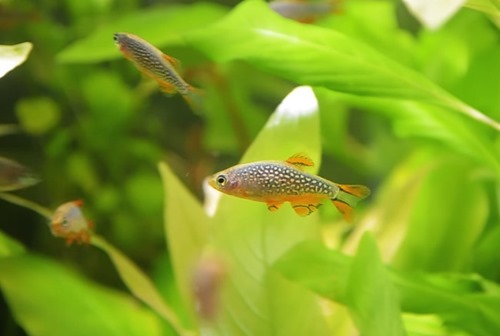
The Celestial Pearl Danio (Danio margaritatus) emerged onto the aquarium scene in 2006, a stunning find by Thai photographer Kamphol Udomritthiruj. Initially photographed near Hopong in Myanmar’s Shan State along the Salween River basin, its vivid hues—deep blues and radiant spots—drew skepticism, with critics dismissing the images as digitally crafted. Undeterred, Kamphol released more photos, proving its authenticity and igniting a frenzy among fishkeepers.
Dubbed the Galaxy Rasbora at first, it hit the trade fast, its allure undeniable. Later studies reclassified it as a danio, aligning it with the Cyprinidae family due to shared traits with relatives like the Zebra Danio. Early abundance from wild collections kept prices low, but a 2007 export ban in Myanmar—prompted by fears of overharvesting and near-extinction—sent costs soaring. With no other known populations at the time, the ban seemed a logical safeguard, amplifying its rarity and mystique.
Subsequent expeditions revealed additional habitats in Myanmar and northern Thailand, easing extinction concerns. Today, its ease of breeding in captivity has stabilized supply, though wild-caught specimens remain prized for their robust genetics. This tiny fish’s journey—from obscurity to aquarium stardom—reflects both its resilience and the hobby’s passion for unique species. Now, let’s dive into how to care for and nurture these celestial wonders in your own tank.
Appearances, Temperament, and Interesting Facts
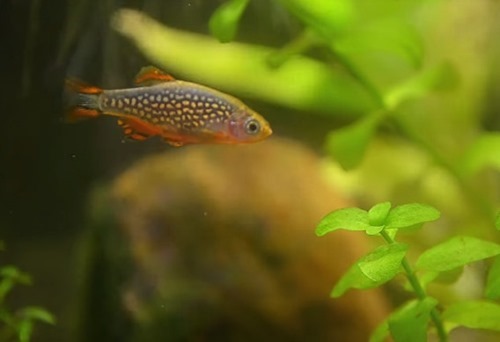
The Celestial Pearl Danio is a visual masterpiece, its petite 0.8-inch frame bursting with color. Males dazzle with a deep, midnight-blue body speckled with white-to-yellow “pearls”—iridescent spots that shimmer like stars. Their fins glow with intense orange-red stripes edged in black, amplifying during courtship when their abdomens flush orange. Females, though subtler, sport a faded blue-green hue, pale orange fins, and fewer pearls, their slightly plumper bodies hinting at egg-bearing potential. The Latin name “margaritatus” (adorned with pearls) perfectly captures their gem-like charm.
Temperament-wise, these danios are shy recluses. Don’t expect bold welcomes—they bolt for cover at sudden movements. Ours live in a busy room, yet months later, they still hide when approached, only emerging when stillness reigns. Other fish don’t faze them; it’s human activity that spooks them. This timidity is innate—accept it as part of their charm, unlike the outgoing guppy. They hover in the mid-to-lower tank, with brief energy bursts of chasing, then resume their serene drifting.
Their small size belies a big reward. Easy breeding and water tolerance make them accessible, while their contrast against lush greenery elevates any planted tank. Fun fact: those “pearls” may confuse predators in the wild, a survival trick that dazzles in captivity. Another quirk? They’re light-sensitive—dim conditions coax out their boldness and brilliance.
Tank Setup, Layout, and Stocking
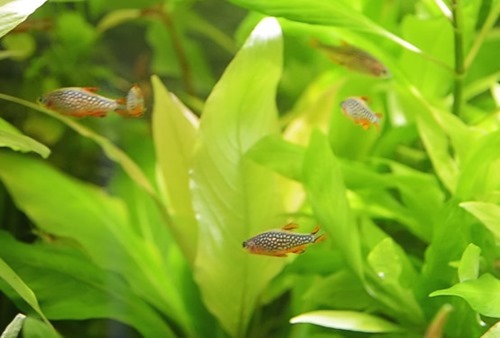
Despite their tiny stature, Celestial Pearl Danios need room to thrive. A 10-gallon tank houses 8-10 comfortably, but a 15-20 gallon setup better disperses their occasional fin-nipping and chasing. These squabbles—playful assertions of hierarchy—rarely harm, fading in larger groups. Their peaceful nature spares tankmates, making them nano tank stars.
Hailing from shallow, plant-choked waters, they favor long, low tanks (e.g., 20-gallon long) over tall ones, lingering in mid-to-bottom zones. Recreate their habitat with a dark substrate—black sand or fine gravel—enhancing their colors. Dense planting is non-negotiable: Elodea, Java moss, Cryptocoryne, and Anubias break sightlines, easing stress. Add driftwood, roots, and rocks for exploration—CPDs love weaving through nooks. Floating plants (Water Sprite, Salvinia) diffuse lighting, mimicking their dim, swampy homes.
Filtration should be gentle—an air-driven sponge filter or low-flow hang-on-back suffices, avoiding currents that unsettle them. Water parameters are forgiving: 68-79°F (aim for 72-75°F), pH 6.5-7.5 (target 7.0-7.3), GH 5-15, KH 8-12. Weekly 20-30% water changes keep nitrates below 15 ppm—never skip cycling. CO2 and fertilizers depend on plant needs, but keep it light—these fish prefer low-tech serenity. Stocking beyond 10 in a 10-gallon risks crowding; scale up thoughtfully.
Compatibility and Tankmates
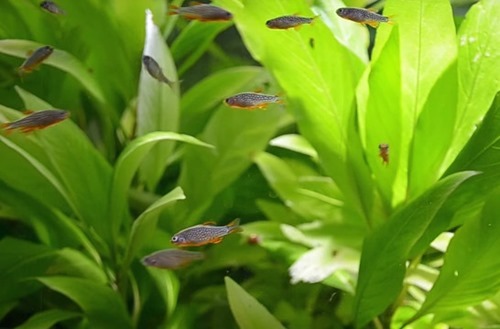
In the wild, Celestial Pearl Danios share space with few species, their skittishness a shield against larger fish. In captivity, they hide from big tankmates—keep them with small, peaceful companions to draw them out. A shoal of 8-10 dilutes aggression, boosting confidence and color. En masse, they’re a mesmerizing swirl of blue and orange, safe with shrimp and micro-fauna.
Ours thrive with red cherry shrimp and pygmy corydoras, a harmonious trio. Other matches include Sundadanio axelrodi, Microdevario kubotai, chili rasboras, Phoenix rasboras, and Boraras brigittae. We tested them with Pseudomugil furcatus, peacock gobies, and Daisy’s Ricefish—after confirming no bottom territoriality, they moved in. Surprisingly, the lively rainbowfish didn’t faze them; they now swim openly, unfazed by our approach. Pygmy cories proved less effective dither fish than expected—activity, not size, unlocks their boldness.
Avoid boisterous or large fish (e.g., tetras, barbs) that intimidate them back into hiding. In a 10-gallon, pair 10 CPDs with 6-8 shrimp and 5 pygmy cories; in a 20-gallon, add 5-6 micro rasboras. Species-only tanks work too, spotlighting their subtle elegance.
Diet, Foods, and Feeding
Celestial Pearl Danios are unfussy omnivores, wild micropredators of invertebrates, algae, and zooplankton. In tanks, they won’t chase surface food—sinking options rule. High-quality flakes and micro pellets (e.g., Hikari Micro Pellets) are accepted, but live and frozen foods—brine shrimp, daphnia, blackworms—enhance color and vigor. Feed small portions 1-2 times daily, targeting mid-to-bottom zones; they’ll scavenge tank algae and microfauna between meals, though not enough to control algae outbreaks.
Wild-caught CPDs may demand live food initially—mosquito larvae, baby brine shrimp, or micro worms ease the shift. For breeding, prioritize live treats like Artemia or white worms to condition adults. Overfeeding risks water fouling; remove excess within 10 minutes. Their diet’s flexibility suits beginners, but variety keeps them thriving.
Breeding Celestial Pearl Danios
Breeding CPDs is delightfully straightforward—they’re egg-scatterers par excellence. Males guard plant patches, sparring lightly (far less than bettas), while females lay 20-30 sticky eggs on leaves or spawning mops. Dense planting—Java moss, Elodea—or wool mops boosts spawning; condition with live foods (daphnia, brine shrimp) for 2 weeks prior. No seasonal cues needed, but keep temps at 72-75°F—below 68°F stalls hatching.
Eggs hatch in 3-4 days into dark, tiny fry, free-swimming by day 6-7. Some get eaten by adults or rivals, so a 5-10 gallon rearing tank with a sponge filter maximizes yield. Feed fry infusoria or micro worms for 2-3 weeks, then baby brine shrimp—supplement with powdered fry food if needed. They mature at 3 months, pearls emerging with age. Their prolific nature ensures a steady supply, sustaining their hobby presence.
Diseases and Treatments
CPDs are resilient but prone to stress-related ills like ich, fin rot, or dropsy from poor water or overcrowding. Ich (white spots) treats with heat (79°F) and salt (1 tsp/gallon) for 7-10 days, or half-dose malachite green—full strength risks harm. Fin rot (tattered fins) needs pristine water and API’s Furan-2 if bacterial. Dropsy (swelling) signals organ failure—often fatal, but early antibiotics (e.g., Kanamycin) may help. Quarantine new fish 2-3 weeks; weekly garlic-soaked food wards off parasites.
Behavioral Insights and Enrichment
Their shyness hides a subtle curiosity—add floating toys or dimmable lights to coax interaction. In a 15-gallon planted tank, 12 CPDs dance among moss and roots, paired with 8 cherry shrimp and 6 chili rasboras—a nano galaxy alive with motion. Their chasing bursts signal health; dim lights at dusk reveal their truest colors. Mirrors (short-term) mimic shoalmates, sparking activity without stress.
Troubleshooting Common Issues
– **Hiding Excessively**: Add dither fish (e.g., rasboras) or dim lights—check for bullies.
– **Faded Colors**: Boost live foods; test pH (aim 7.0-7.3).
– **No Breeding**: Raise temp to 75°F, add spawning mops, and feed live.
– **Fry Loss**: Separate eggs early; ensure live food supply.
Why Keep Celestial Pearl Danios?
Their size belies their impact—perfect for nano tanks, they blend beauty with simplicity. A 10-gallon setup costs under $100, yet yields a living artwork. Their 3-year lifespan invites long-term bonds, while breeding success empowers beginners and pros alike. From Myanmar’s shallows to your home, CPDs bring a slice of the cosmos, proving small fish cast big shadows.
Reference sources:
https://www.fishbase.ca/summary/Celestichthys-margaritatus.html
https://www.seriouslyfish.com/species/celestichthys-margaritatus
https://en.wikipedia.org/wiki/Danio_margaritatus

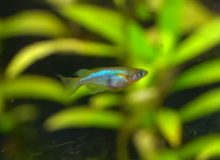
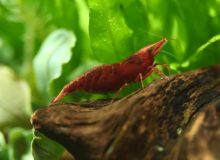
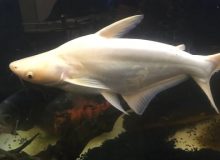
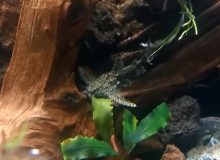
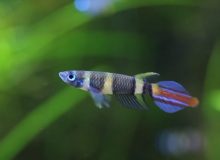
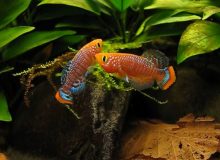
Leave a Reply